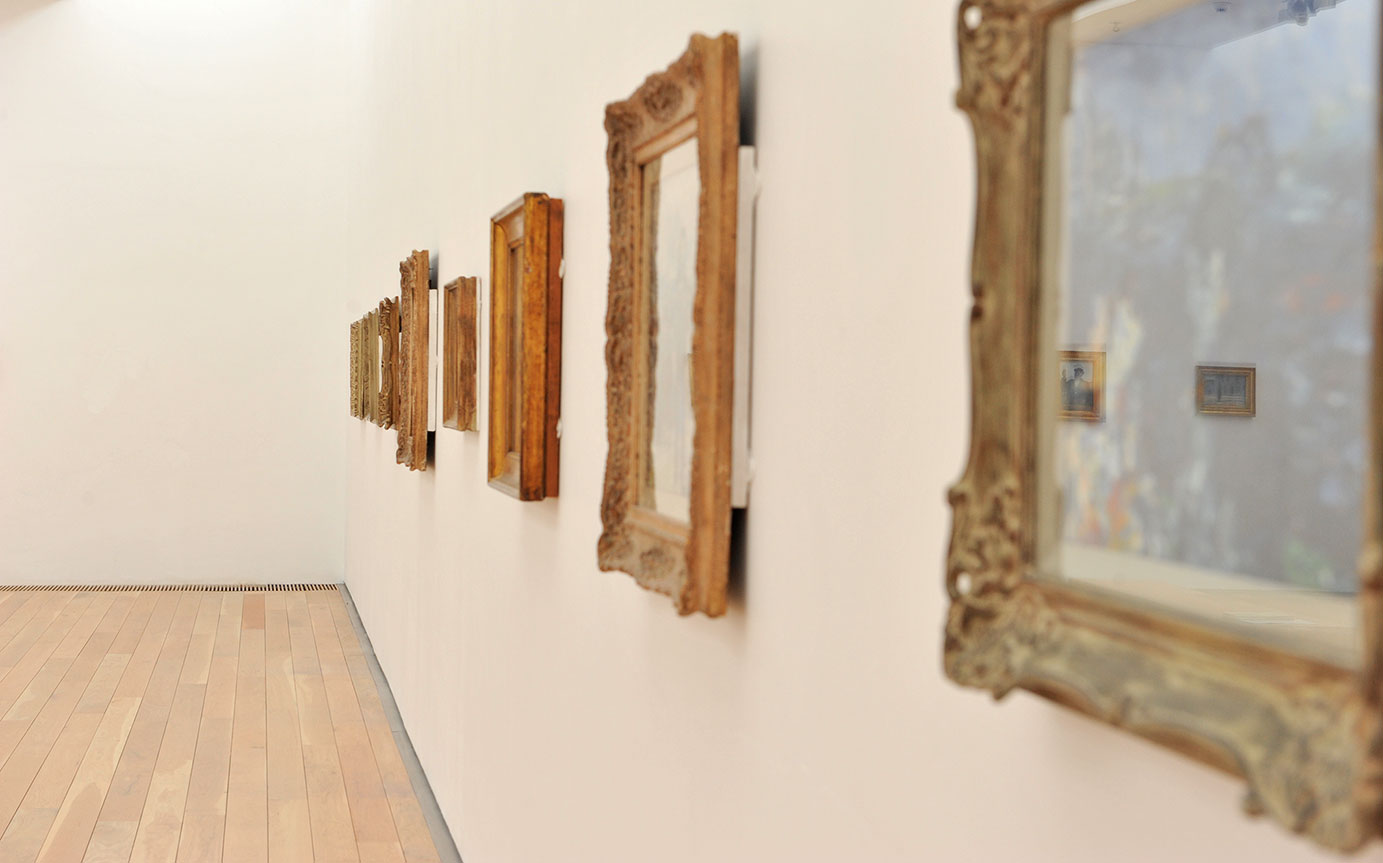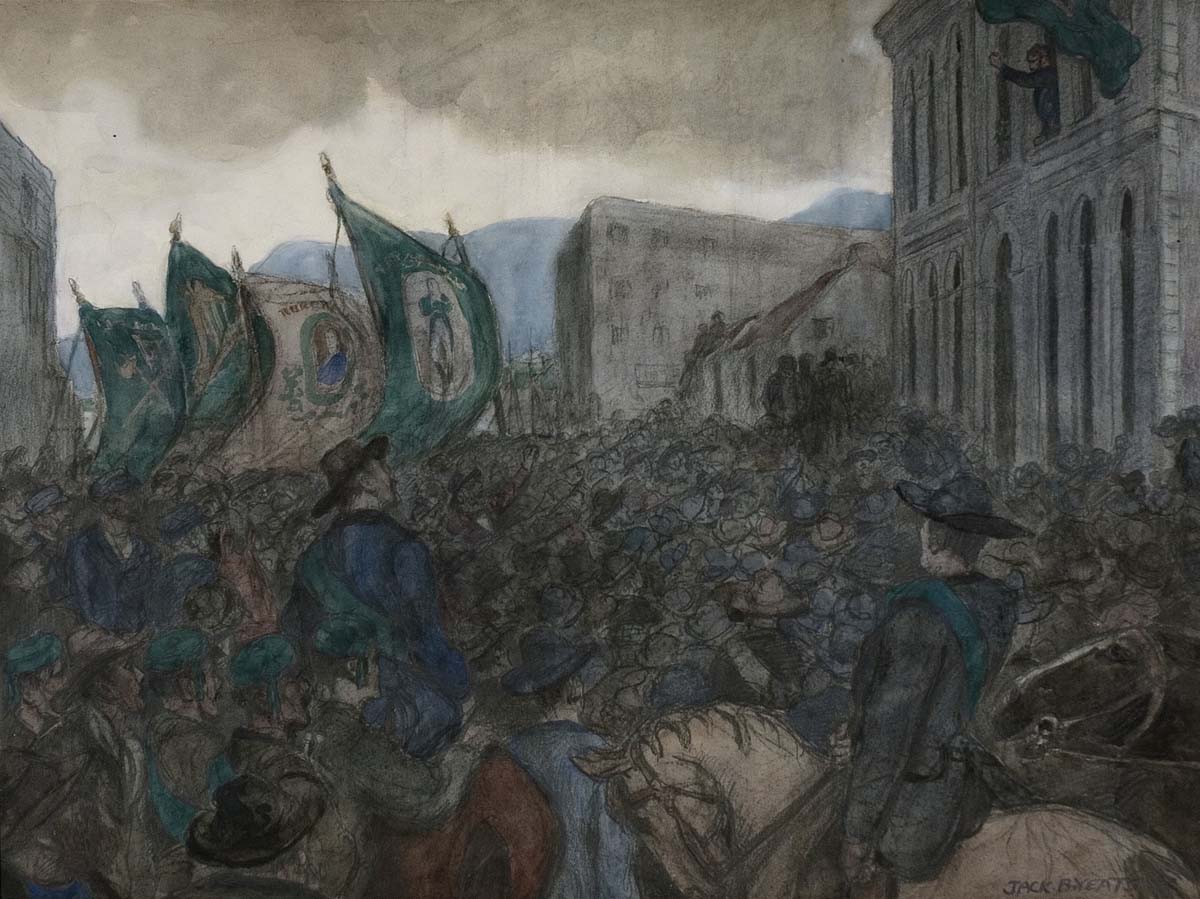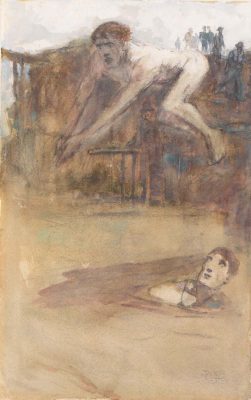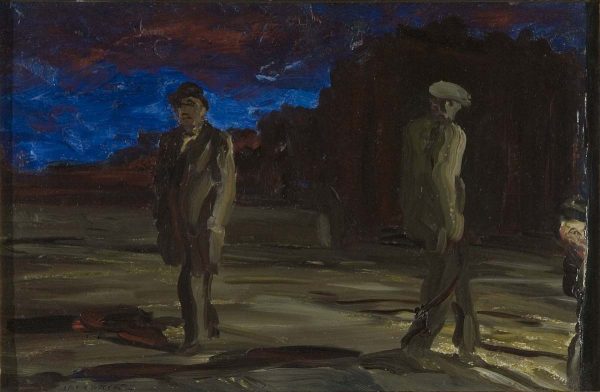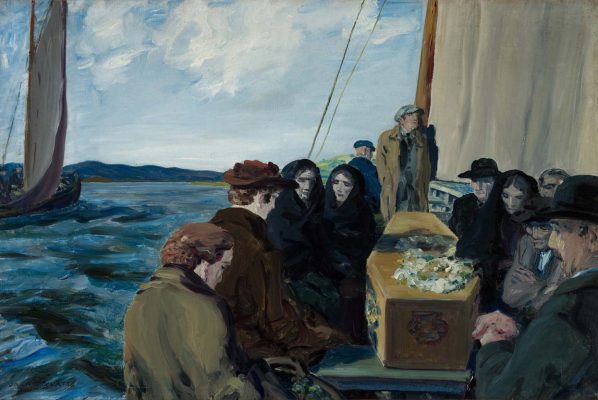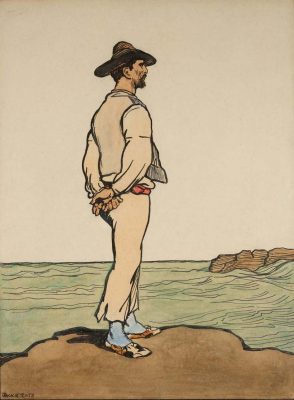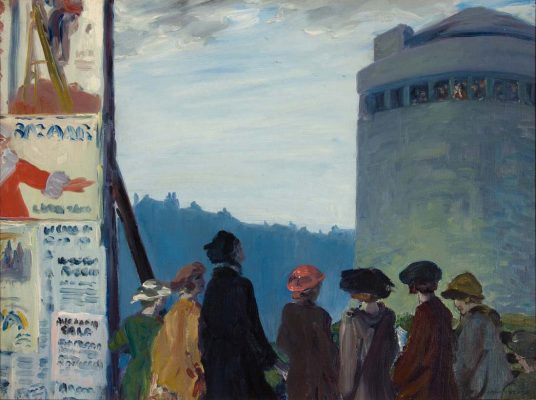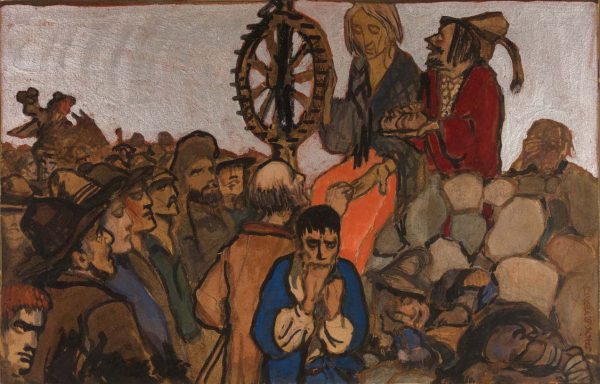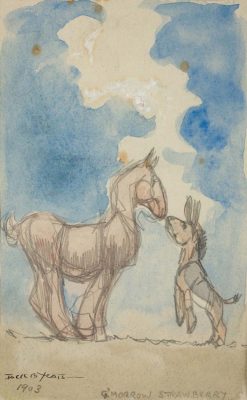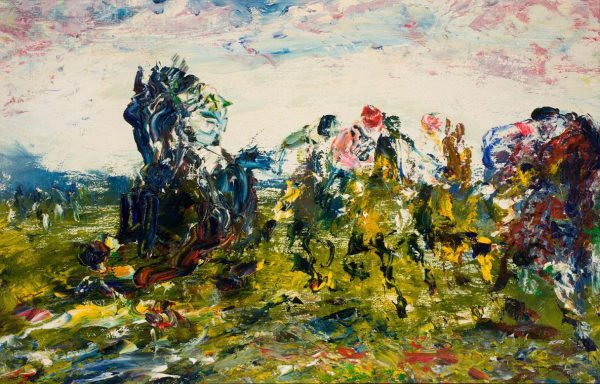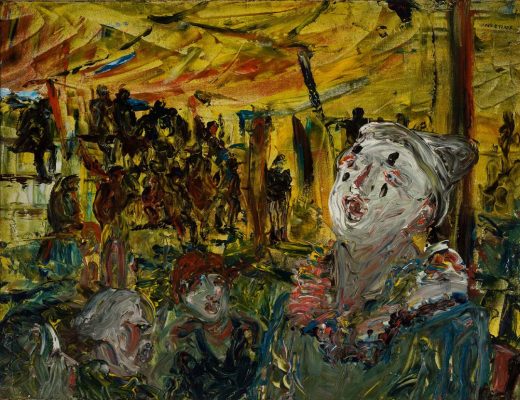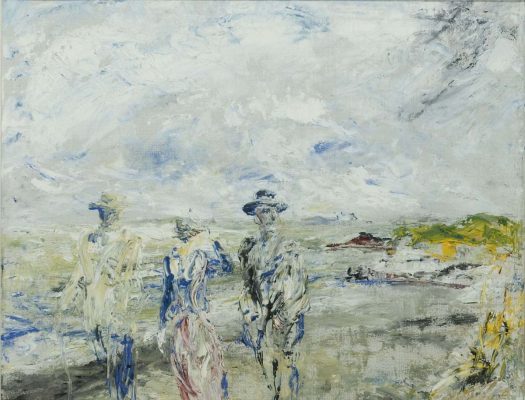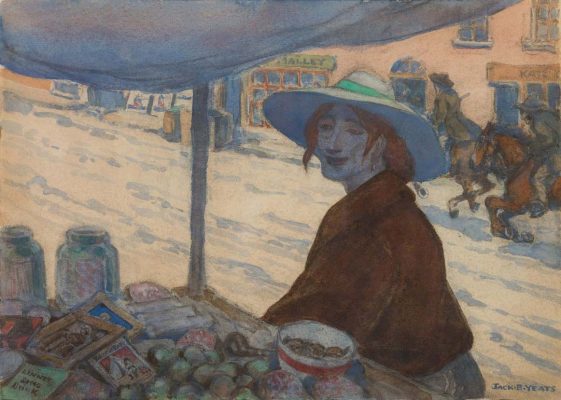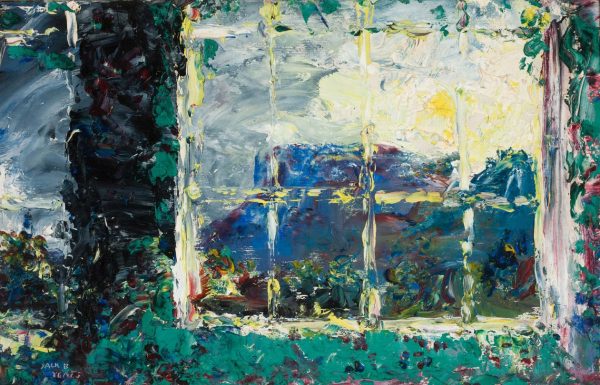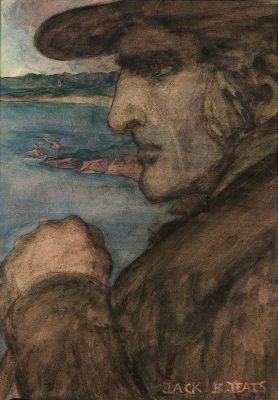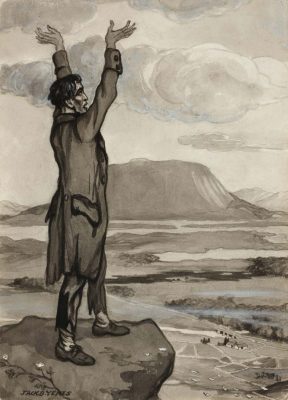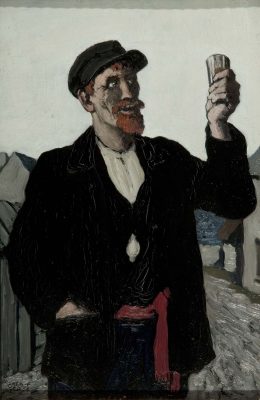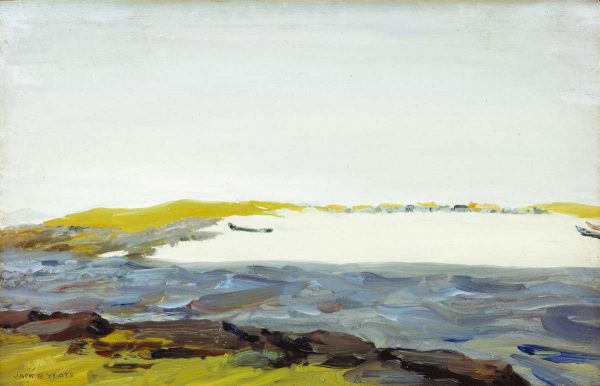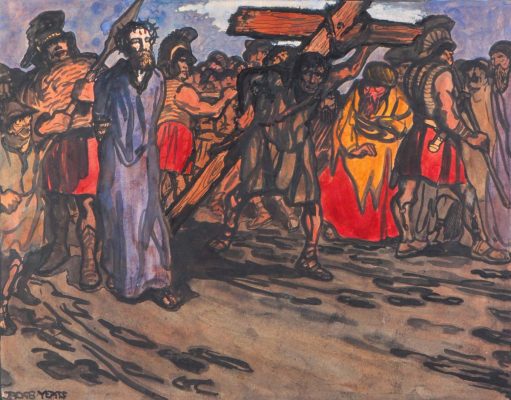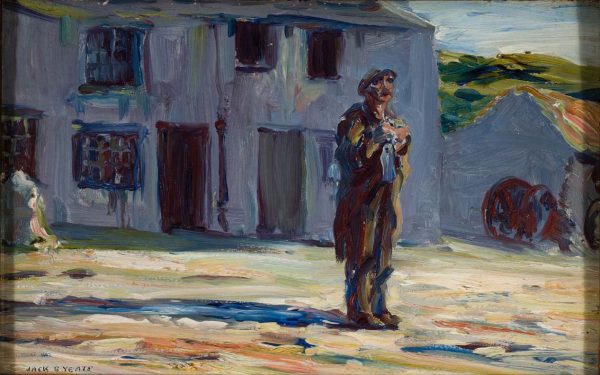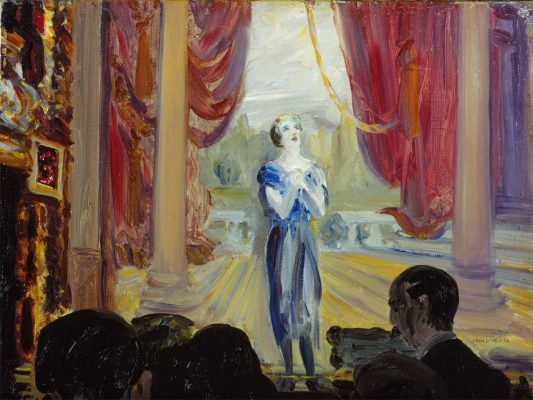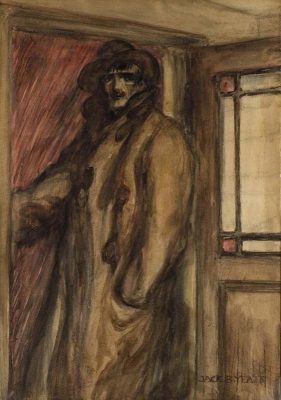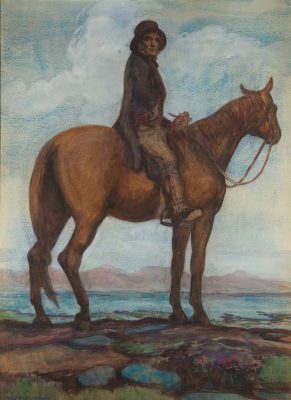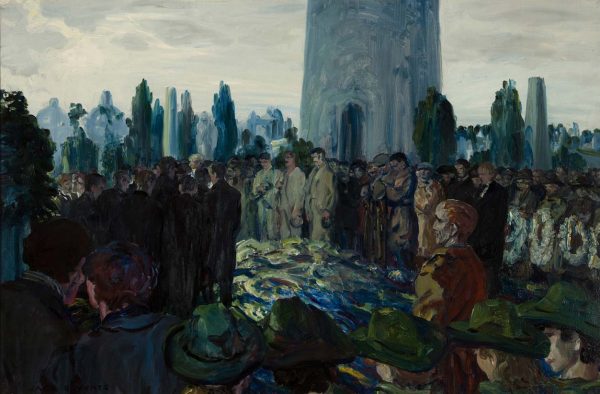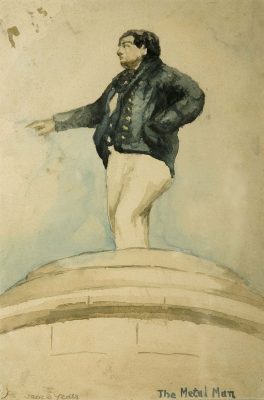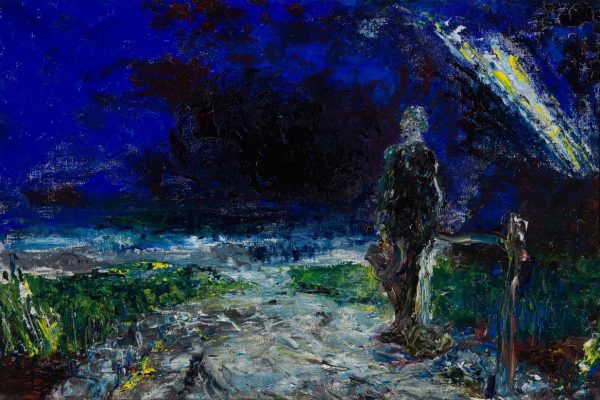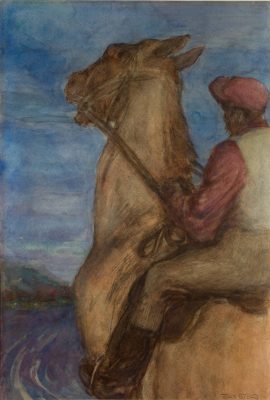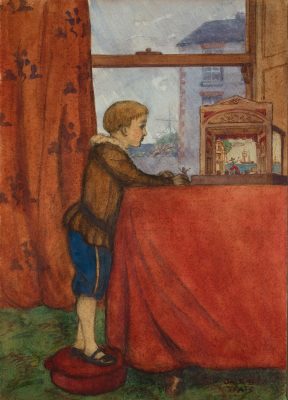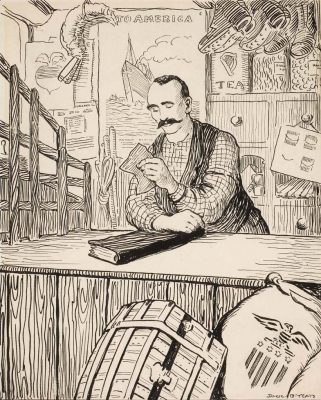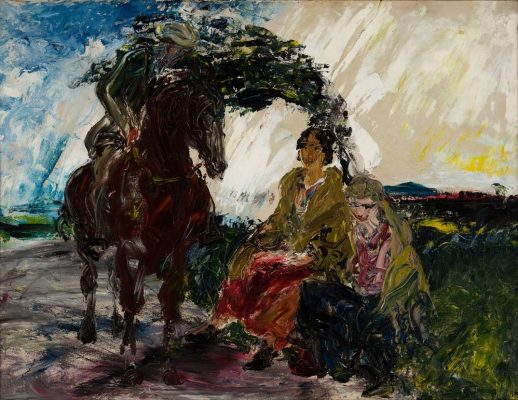Date: 1905.
Dimensions: 71.5 × 53.25cm.
Medium: Watercolour and pencil.
Collection: Niland Collection.
Provenance: Presented to Sligo County Library and Museum by James A. Healy in 1965, as a memorial to his parents John and Catherine Healy.
Description:
On 11 February 1905 the Lily of Lough Gill branch of the Irish National Foresters welcomed the Lord Mayor of Dublin, secretary general of the society, to Sligo. The latter was the only surviving member of those who had founded the Irish National Foresters, a nationalist organisation which had broken away from the Ancient Order of Foresters in 1877. It was one of the most widespread and popular Irish friendly societies of the pre-World War One period with branches in several countries throughout the world.
Yeats’s painting shows members of the Foresters wearing sashes and carrying banners depicting Robert Emmet and Irish harps and jostling for position outside the town hall in Sligo. The Lord Mayor of Dublin can be seen in an upper floor window of this building, obviously speaking with great passion, his arms raised dramatically. His speech attacked the evils of emigration. Behind the swirling forms of the foresters and the grey buildings of the town can be seen the mountains of the Ben Bulben range and a dark stormy sky.
Yeats was in England at the time of this event and probably based his painting on a photograph [speaker-mute](1)[/speaker-mute]. His version manages to capture the dynamic movement of the crowd and resonates with the burgeoning nationalist fervour of this period. Yeats was probably drawn to the subject as it was reminiscent of his 1898 visit to Sligo when he witnessed the unveiling of a monument to Bartholomew Teeling, a hero of the 1798 rebellion which occasioned a similar sense of excitement and historical occasion. The work was acquired by John Quinn at an exhibition in Dublin in 1905 and transported to New York. James A. Healy subsequently bought it in 1939 and donated it to Sligo in 1965.
[speaker-mute](1) H. Pyle, Jack B. Yeats at the Niland Gallery Sligo, 1998, p.16.[/speaker-mute]
Written by Roisin Kennedy
Born 1871, London, United Kingdom.
Died 1957, Dublin, Ireland.
Jack B. Yeats was the youngest son of the portrait painter John Butler Yeats and the brother of the writer William Butler Yeats. Though he was born in London, Jack spent most of his childhood in Sligo in the care of his maternal grandparents. It was a place that influenced him deeply and he later said that every painting he produced “had a thought of Sligo in it”.
Jack studied in London at the South Kensington School of Art and later at the Westminster School of Art, though he was largely self-taught and had his own distinct style from the beginning. While still at school he was working as an illustrator and contributing to various publications such as Paddock Life, the Daily Graphic and the Vegetarian.
His early work, mostly in watercolour, focuses on the Sligo of his boyhood. These works display his emerging interest in the people and places of every day life- the market day, the sailor, and the races. In 1894 he married his fellow art student Mary Cottenham White, and they settled in England. He held his first solo show in London in 1897 and shortly afterwards he began to focus solely on Irish subject matter. In 1910 he returned to live in Ireland. The same year he began to contribute illustrations to the satirical publication Punch under the pseudonym W. Bird, and over the next 30 years he supplied the magazine with over five hundred drawings.
In 1905 Yeats toured Connemara with the writer John M Synge who had been commissioned to write a series of articles for the Manchester Guardian on life in the west of Ireland. This trip, coupled with his upbringing in Sligo, made an indelible impression on the artist. His wide-ranging interest in all of humanity led him to depict subjects ranging from street scenes, to boxing matches, the races, and funerals.
In 1910 he returned to Ireland and settled first in Bray and later in Dublin. He became an associate member of the
in 1915 and a full member the following year. He was a founder member of the Society of Dublin Painters in 1920, and in 1922 he participated in the Exposition d’Art Irlandais in Paris. He won the silver and the bronze medals at the
e Olympiade in Paris in 1924 for the painting The Liffey Swim.
Yeats’ early paintings were in watercolour and he was over thirty by the time he began to work regularly in oils. For years his style remained essentially conservative, but in the mid-1920s a profound change began to take place. Yeats’s handling grew much freer, his forms were defined by brushstrokes rather than by line, his colours grew richer and more luminous and his earlier realism gradually gave way to a moody, intimate and highly personal romanticism. These tendencies grew even more marked over the next two decades, until in his final years when his subject-matter is sometimes buried and almost obliterated by rich impasto, bravura brushwork and flame-like areas of colour.
He exhibited widely in Dublin and London, and in 1932 held solo shows at the Ferragail Galleries and the Barbizon Museum of Irish Art, New York. He first showed with Victor Waddington Galleries, Dublin in 1943, and continued to exhibit there until his death. A major retrospective of his work opened at the Tate Gallery, London in 1948. Jack B Yeats died in Dublin on March 28 1957.

